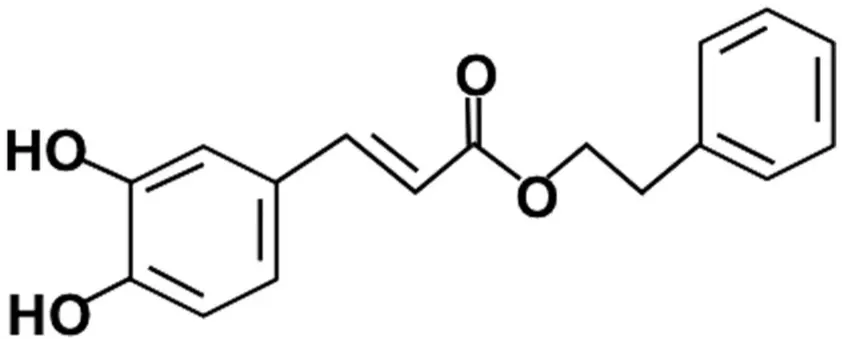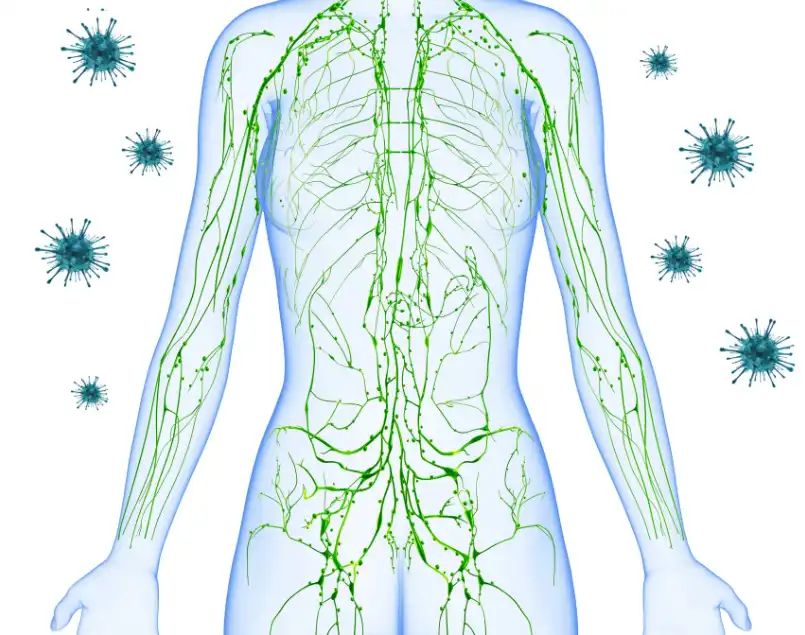What are the Main Active Ingredients in CAPE Powder?
CAPE Powder, derived from propolis, has gained significant attention in the health and wellness industry due to its potent bioactive compounds. This article delves into the primary active ingredients found in CAPE Powder, exploring their properties and potential benefits. Understanding these components is crucial for those interested in natural supplements and their applications in various fields, including nutrition, pharmaceuticals, and cosmetics.

What is the chemical composition of CAPE Powder?
The structure and properties of Caffeic Acid Phenethyl Ester (CAPE)
Caffeic Acid Phenethyl Ester (CAPE) is the principal active ingredient in CAPE Powder. This compound is a polyphenol ester derived from honeybee propolis. CAPE's chemical structure consists of a caffeic acid molecule linked to a phenethyl alcohol group, giving it unique properties. The molecular formula of CAPE is C17H16O4, and it has a molecular weight of 284.3 g/mol. CAPE Powder typically contains a high concentration of this compound, usually ranging from 98% to 99% purity. The presence of CAPE in the powder contributes to its potent antioxidant, anti-inflammatory, and immunomodulatory properties, making it a valuable ingredient in various health applications.
Other phenolic compounds present in CAPE Powder
While CAPE is the primary component, CAPE Powder may also contain trace amounts of other phenolic compounds naturally present in propolis. These include flavonoids such as chrysin, galangin, and pinocembrin, as well as other phenolic acids like ferulic acid and p-coumaric acid. These compounds, although present in smaller quantities, can synergistically enhance the overall bioactivity of CAPE Powder. The exact composition may vary slightly depending on the source of propolis and the extraction methods used. However, reputable manufacturers of CAPE Powder ensure that the CAPE content remains consistently high, typically above 98%, to maintain the product's efficacy and quality standards.
Trace minerals and other constituents in CAPE Powder
In addition to CAPE and other phenolic compounds, CAPE Powder may contain trace amounts of minerals and other constituents derived from propolis. These can include small quantities of elements such as zinc, iron, and magnesium, which are naturally present in bee propolis. Some CAPE Powder preparations may also contain minute amounts of waxes and resins, which are residual components from the propolis extraction process. It's important to note that these additional constituents are typically present in very small amounts and do not significantly affect the overall composition or efficacy of CAPE Powder. The primary focus remains on the high concentration of CAPE, which is responsible for the majority of the powder's biological activities and health benefits.
How does the extraction process affect CAPE Powder composition?
Solvent extraction techniques for CAPE isolation
The extraction process plays a crucial role in determining the final composition and quality of CAPE Powder. Solvent extraction is the most common method used to isolate CAPE from propolis. This technique typically involves using organic solvents such as ethanol, methanol, or ethyl acetate to extract CAPE and other phenolic compounds from raw propolis. The choice of solvent and extraction conditions significantly influences the yield and purity of CAPE in the final powder. For instance, ethanol extraction is often preferred due to its efficiency in isolating CAPE while minimizing the extraction of unwanted components. The extraction process is carefully optimized to ensure a high CAPE content in the resulting powder, typically aiming for a purity level of 98% or higher.
Purification steps to increase CAPE concentration
After the initial extraction, CAPE Powder undergoes several purification steps to increase its CAPE concentration and remove impurities. These steps may include filtration, liquid-liquid extraction, and chromatographic techniques. Column chromatography, particularly silica gel chromatography, is commonly employed to separate CAPE from other propolis components. High-performance liquid chromatography (HPLC) may also be used for further purification and to verify the purity of the final product. These purification steps are critical in producing high-quality CAPE Powder with minimal impurities. The refined product is then carefully dried under controlled conditions to yield a fine powder with a high CAPE content, ensuring that the active ingredients are preserved and concentrated for maximum efficacy.
Quality control measures in CAPE Powder production
Rigorous quality control measures are implemented throughout the production process of CAPE Powder to ensure consistency and purity. These measures include regular testing of raw materials, in-process checks during extraction and purification, and final product analysis. Advanced analytical techniques such as HPLC, gas chromatography-mass spectrometry (GC-MS), and nuclear magnetic resonance (NMR) spectroscopy are employed to verify the CAPE content and identify any potential impurities. Manufacturers also conduct stability tests to ensure that the CAPE Powder maintains its potency over time. Additionally, certificates of analysis are often provided, detailing the exact composition of the powder, including CAPE concentration and any trace components. These quality control measures are essential in producing CAPE Powder that meets the high standards required for research, pharmaceutical, and nutraceutical applications.
What are the potential health benefits associated with CAPE Powder ingredients?
Antioxidant and anti-inflammatory properties of CAPE
The antioxidant and anti-inflammatory properties of CAPE are among its most well-studied and significant health benefits. CAPE, as the primary component of CAPE Powder, has demonstrated potent free radical scavenging abilities, helping to neutralize harmful oxidative stress in the body. This antioxidant activity is crucial in protecting cells from damage caused by reactive oxygen species, potentially reducing the risk of chronic diseases associated with oxidative stress. Furthermore, CAPE has shown remarkable anti-inflammatory effects by inhibiting the production of pro-inflammatory cytokines and modulating various inflammatory pathways. These properties make CAPE Powder a promising ingredient in formulations aimed at managing inflammatory conditions and supporting overall cellular health.
Potential anticancer effects of CAPE Powder components
CAPE can activate endogenous nitric oxide synthase (eNOS) at low concentrations and promote the release of nitric oxide. Nitric oxide is an important signaling molecule that can relax vascular smooth muscle, thereby helping to dilate blood vessels and lower blood pressure. High concentrations of CAPE can block the exchange of calcium ions inside and outside cells, which helps to regulate intracellular calcium ion levels and affect the contractile function of myocardial and vascular smooth muscle cells, thereby playing a cardiovascular protective role. CAPE can reduce the formation of atherosclerotic plaques and maintain vascular health by inhibiting the inflammatory response and oxidative stress of vascular endothelial cells.
Immunomodulatory effects of CAPE Powder ingredients
The immunomodulatory effects of CAPE Powder ingredients, particularly CAPE itself, have garnered significant attention in the field of immunology. CAPE has been shown to influence various aspects of the immune system, potentially enhancing its overall function. Studies have indicated that CAPE can modulate the activity of immune cells, including T cells, B cells, and macrophages. It appears to have a regulatory effect on immune responses, potentially helping to balance the immune system and prevent overactive immune reactions. This property makes CAPE Powder an interesting candidate for research into autoimmune disorders and inflammatory conditions. Additionally, the immunomodulatory effects of CAPE may contribute to its potential in supporting overall health and wellness by helping the body maintain a balanced immune response.

Conclusion
CAPE Powder, with its high concentration of Caffeic Acid Phenethyl Ester (CAPE), emerges as a potent natural ingredient with diverse health-promoting properties. The primary active ingredients, dominated by CAPE, contribute to its antioxidant, anti-inflammatory, potential anticancer, and immunomodulatory effects. The careful extraction and purification processes ensure a high-quality product, rich in bioactive compounds. While research continues to explore its full potential, CAPE Powder shows promise in various health applications, from supporting immune function to potentially aiding in cancer prevention. As with any supplement, it's crucial to consult healthcare professionals before incorporating CAPE Powder into health regimens.
Shaanxi Yuantai Biological Technology Co., Ltd. (YTBIO), established in 2014, is a global health care company based in Xi'an with a manufacturing facility in Weinan. We specialize in health food ingredients (such as Herbal Extracts, Magnesium Threonate, and Creatine Monhydrate) and cosmetic ingredients (including Sponge Spicule, Retinol, Glutathione, and Arbutin). We work with partners in Europe, America, Southeast Asia, and Korea. With a warehouse in Rotterdam for EU distribution and plans for U.S. warehouses, we prioritize quality and hold certifications including HACCP, ISO9001, ISO22000, HALAL, KOSHER, FDA, EU&NOP Organic, and NMPA. We also assist Korean clients with KFDA registration. Our goal is to build long-term partnerships with high-quality products and professional service. For inquiries, contact us at sales@sxytorganic.com or +86-029-86478251 / +86-029-86119593.
References
- Zhang, P., Tang, Y., Li, N. G., Zhu, Y., & Duan, J. A. (2014). Bioactivity and chemical synthesis of caffeic acid phenethyl ester and its derivatives. Molecules, 19(10), 16458-16476.
- Tolba, M. F., Azab, S. S., Khalifa, A. E., Abdel-Rahman, S. Z., & Abdel-Naim, A. B. (2013). Caffeic acid phenethyl ester, a promising component of propolis with a plethora of biological activities: A review on its anti-inflammatory, neuroprotective, hepatoprotective, and cardioprotective effects. IUBMB Life, 65(8), 699-709.
- Murtaza, G., Karim, S., Akram, M. R., Khan, S. A., Azhar, S., Mumtaz, A., & Bin Asad, M. H. H. (2014). Caffeic acid phenethyl ester and therapeutic potentials. BioMed Research International, 2014, 145342.
- Akyol, S., Ozturk, G., Ginis, Z., Armutcu, F., Yigitoglu, M. R., & Akyol, O. (2013). In vivo and in vitro antineoplastic actions of Caffeic acid phenethyl ester (CAPE): therapeutic perspectives. Nutrition and Cancer, 65(4), 515-526.
- Ozturk, G., Ginis, Z., Akyol, S., Erden, G., Gurel, A., & Akyol, O. (2012). The anticancer mechanism of caffeic acid phenethyl ester (CAPE): review of melanomas, lung and prostate cancers. European Review for Medical and Pharmacological Sciences, 16(15), 2064-2068.
- Armutcu, F., Akyol, S., Ustunsoy, S., & Turan, F. F. (2015). Therapeutic potential of caffeic acid phenethyl ester and its anti-inflammatory and immunomodulatory effects (Review). Experimental and Therapeutic Medicine, 9(5), 1582-1588.
_1737093401309.png)
